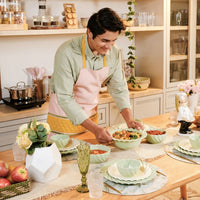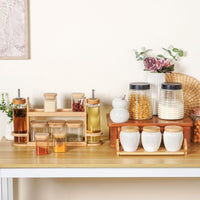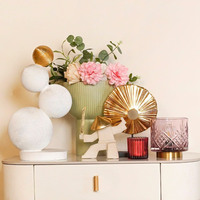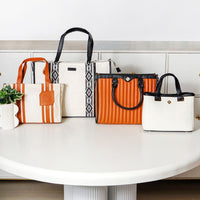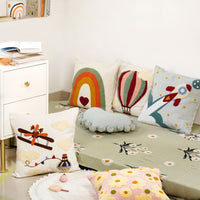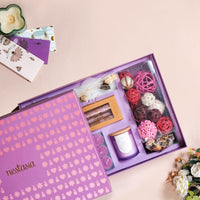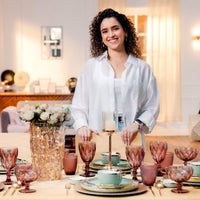Storage jars do more than hold ingredients. They bring order to your kitchen, add character to shelves, and help reduce waste. Whether you're giving your pantry a fresh look or simply trying to make everyday cooking easier, the right set of jars can make a noticeable difference.
From glass to ceramic to plastic, the choices are many. So, how do you decide what's best for your home? Let’s break it down by material, size, shape, and practical use.

1. Choosing the Right Material: Glass, Plastic, or Ceramic
Before picking a shape or size, start by choosing the material that suits your needs and your lifestyle. Each type comes with its own pros and cons, depending on how and where you plan to use the jars.
Glass Jars
Glass jars are popular for all the right reasons. They’re transparent, which means you can see exactly what’s inside and how much of it is left. That alone saves you from rummaging through containers or running out of key ingredients mid-recipe.
They don’t absorb smells or stains, making them suitable for storing spices, tea, coffee, sugar, rice, or pasta. With an airtight lid, glass jars keep moisture and pests away, which is especially helpful in humid environments.

Glass is also dishwasher-safe and easy to clean, though it can be heavy and breakable. If you're storing in areas that get a lot of movement or have children around, think about placing the jars in more secure locations or opt for thicker glass.
Plastic Jars
Plastic jars work well when you need something light and unbreakable. They’re easier to carry, pack, or stack, making them ideal for snacks, cereals, or food on the go. Some also come with clip-lock lids or measuring lines, which can be quite handy.
That said, plastic jars may absorb strong odours over time, especially if used for storing spices or pungent ingredients. Always check that they are BPA-free and food-grade. Avoid using them to store hot items unless they are clearly marked as microwave-safe.
Plastic is a good choice for children's snacks, fridge storage, or travel, but it's less suitable for ingredients that you want to keep fresh over the long term.
Ceramic Jars
Ceramic jars tend to be more decorative. With beautiful finishes and colours, they’re often used for countertop storage or open shelves. Their opaque design helps protect contents from light, which helps store tea, coffee, or herbs.
Unlike plastic or glass, ceramic jars are heavier and not see-through. You’ll want to label them or use them for items you recognise by weight or smell. They’re not the best choice if you’re reaching for ingredients quickly while cooking, but they work perfectly for display or low-use items.
2. Picking the Right Size and Shape
Storage needs are rarely one-size-fits-all. A well-organised kitchen often has a mix of jar sizes and shapes, chosen based on how often you use the items and how much of them you store.
Small Jars
Best for spices, seeds, sugar cubes, or condiments. They fit neatly into drawers, spice racks, or tiered organisers. Small jars also come in handy when buying ingredients in small quantities or when you prefer to keep things fresh with frequent refills.
Medium Jars
These are your everyday heroes. Ideal for lentils, pulses, dry fruit, biscuits, or breakfast toppings like oats and muesli. They strike the right balance between storage capacity and shelf space.
Large Jars
Use these for bulk ingredients like rice, flour, or snacks bought in large packs. Wide-mouth jars make scooping easier. Place them on lower shelves or inside deep drawers to avoid lifting heavy jars from high places.
Tall Jars
Useful for storing spaghetti, breadsticks, or layered snacks like trail mix. Tall jars also work well in narrow cupboards or when you want to make the most of vertical space.
Stackable or Space-saving Shapes
Square or rectangular jars let you store more in the same space. They fit side by side without wasting gaps between them. Round jars are better for scooping and look great on open shelves, but may not be the most efficient in tight spots.
Also visit : https://nestasia.in/collections/kitchen-tools
3. Matching Jar Purpose with Function
Once you’ve narrowed down the material and shape, think about how and where you’ll be using each jar. This helps you avoid buying a full matching set that doesn’t serve your purpose.
Dry pantry storage: Airtight glass or ceramic jars are best for keeping contents crisp and free from pests.
Snacks and quick bites: Plastic jars with pop or screw tops make snacking easy, especially for kids.
Fridge storage: Look for plastic or glass jars with secure, leak-proof lids to prevent spills.
Countertop display: Use clear jars for colourful items like sweets, cookies, or trail mix, and ceramic jars for a clean, minimal look.
Cooking zone jars: Keep your most-used ingredients like salt, sugar, tea, and coffee in medium-sized jars within arm’s reach of your stove or prep area.
4. Keeping Things Organised: The Basics
The key to neat storage isn't just having matching jars, but using them smartly. Here are a few simple habits that can go a long way:
Label clearly: Use waterproof stickers or chalk labels to identify contents, especially for ceramic or opaque jars.
Group by category: Store baking ingredients together, snacks together, and so on. This makes it easier to find things.
Keep what's used most at eye level: Daily items should be easy to reach. Lesser-used ingredients can go higher or lower.
Rotate stock: When refilling, bring older items to the front so nothing goes to waste.
Also visit : https://nestasia.in/collections/kitchen-racks
Final Thoughts
Choosing the right storage jars depends on what you cook, how you shop, and how much space you have. A mix of glass, plastic, and ceramic jars in various sizes often works best. Pay attention to the kind of lid each jar has, where it will be stored, and how easy it is to clean.
An organised kitchen isn’t just about looks. It saves time, keeps food fresh, and makes daily tasks smoother. And with the right jars, even the smallest shelf can feel like it belongs in a home you enjoy spending time in.

